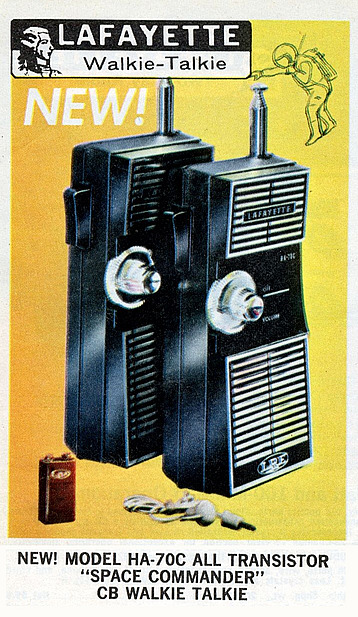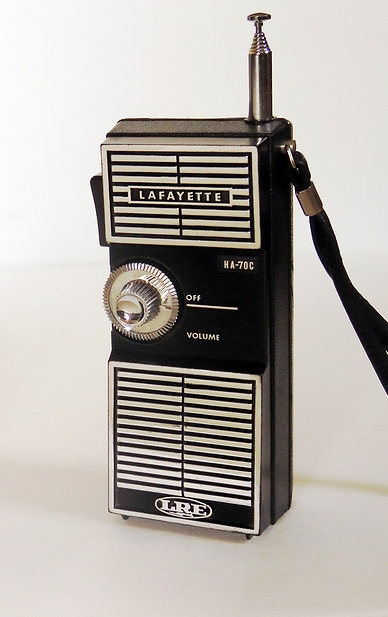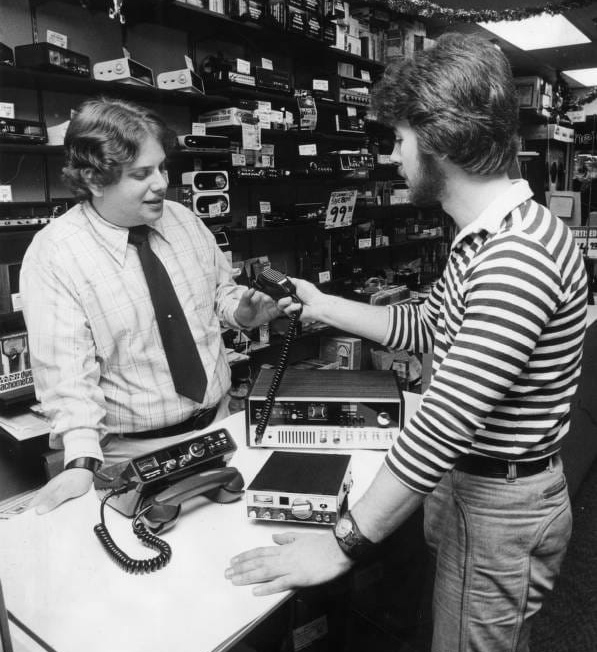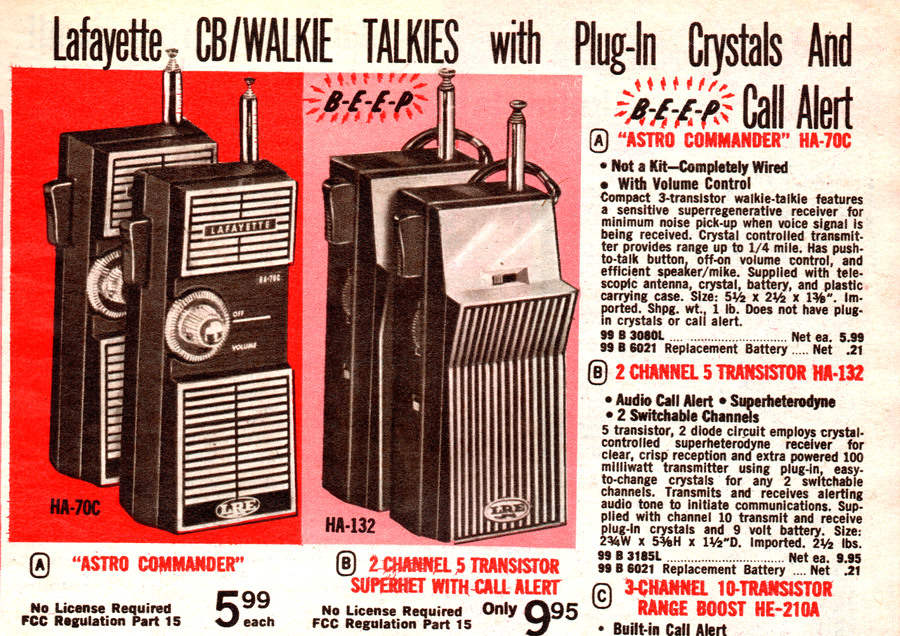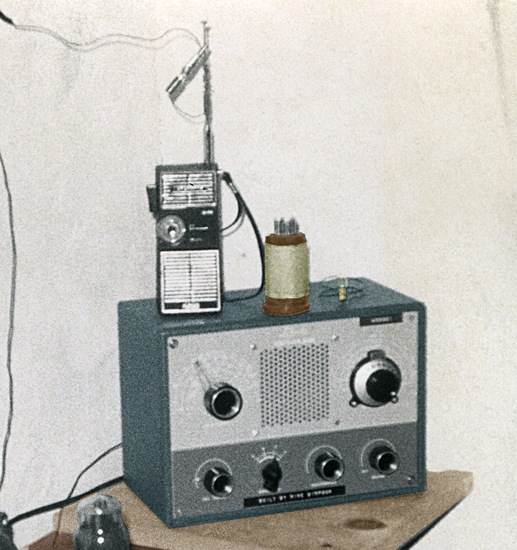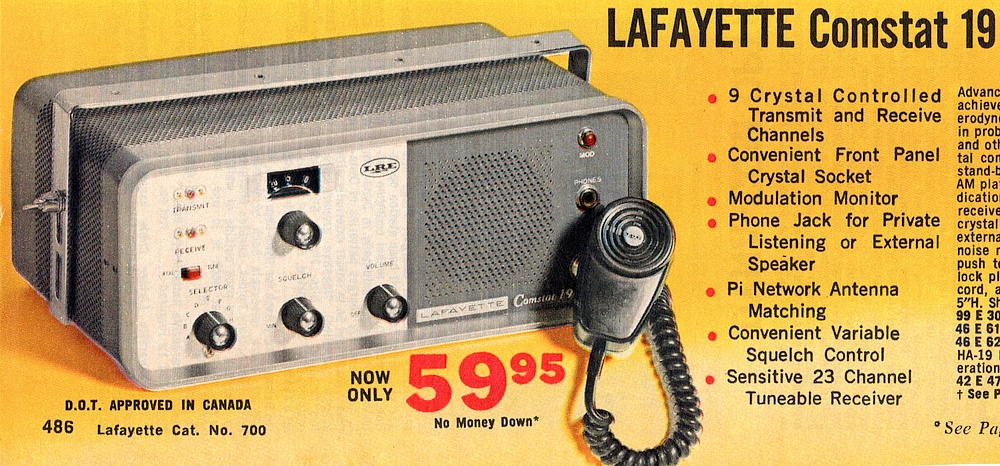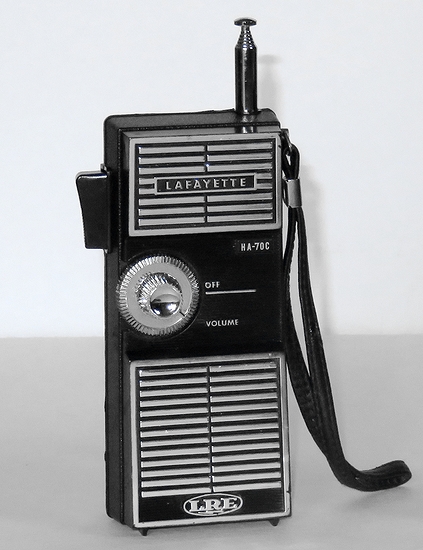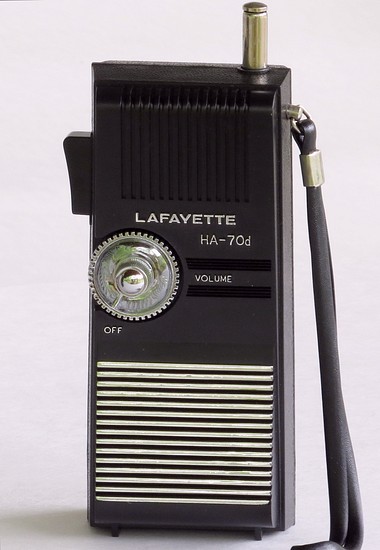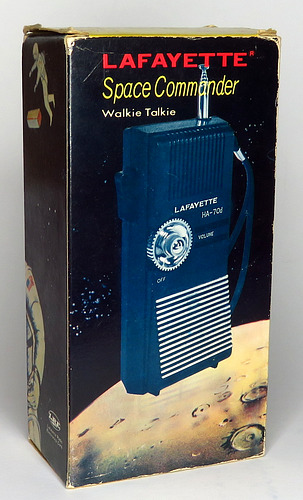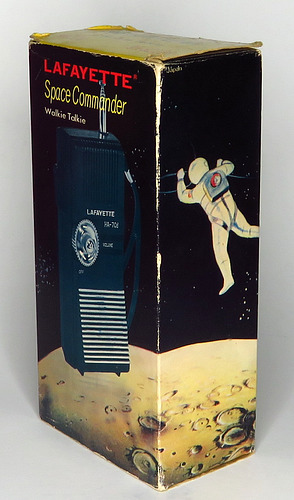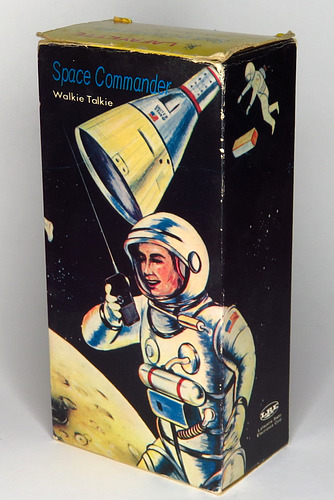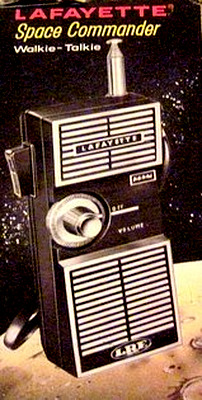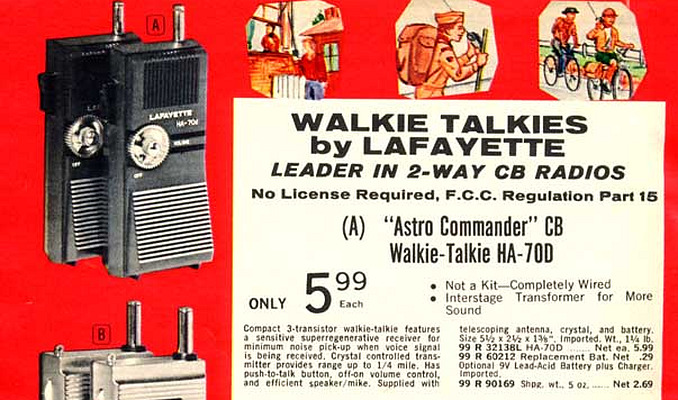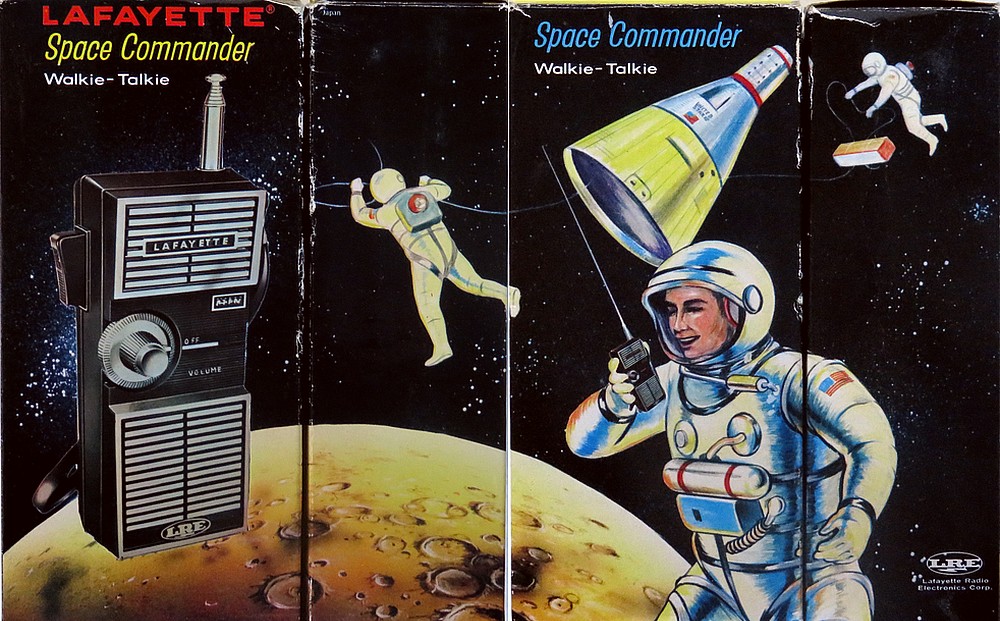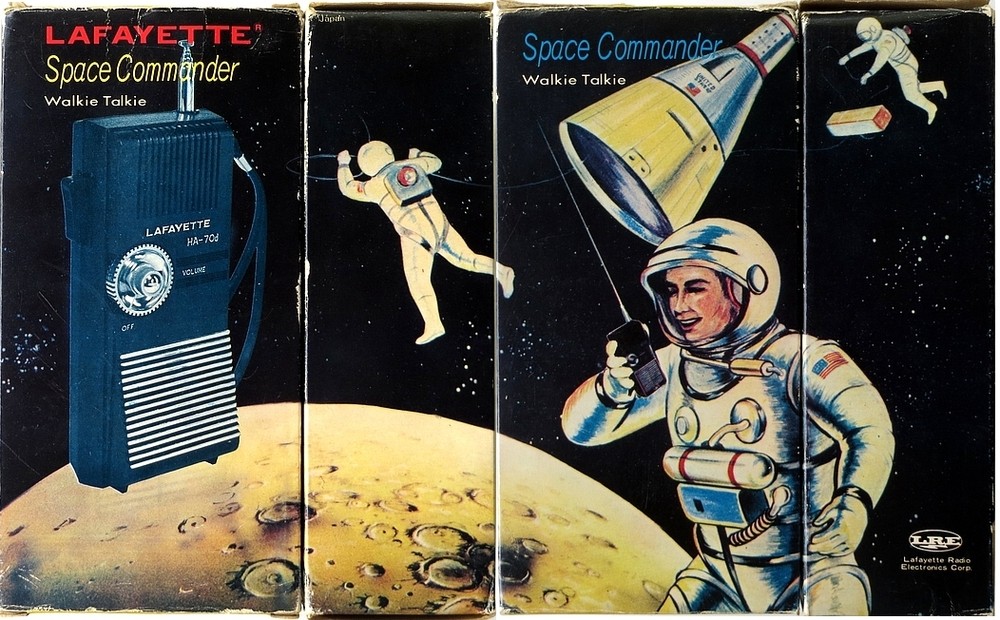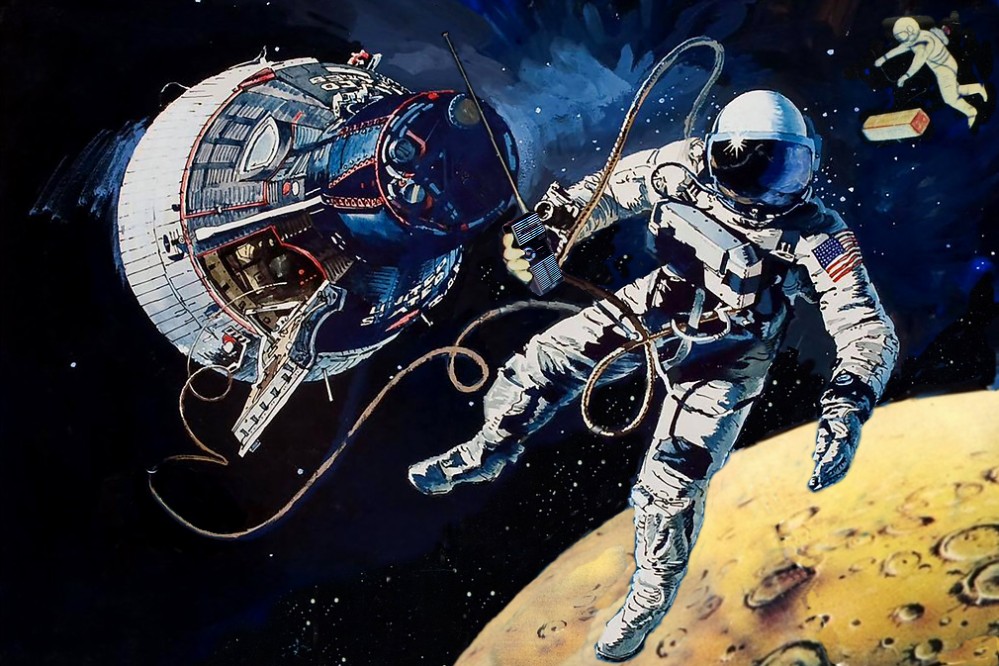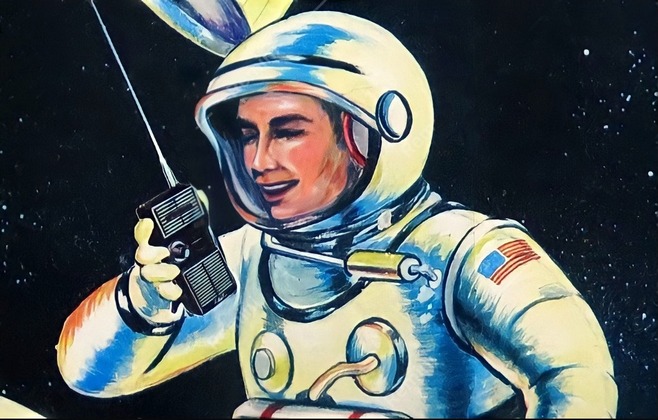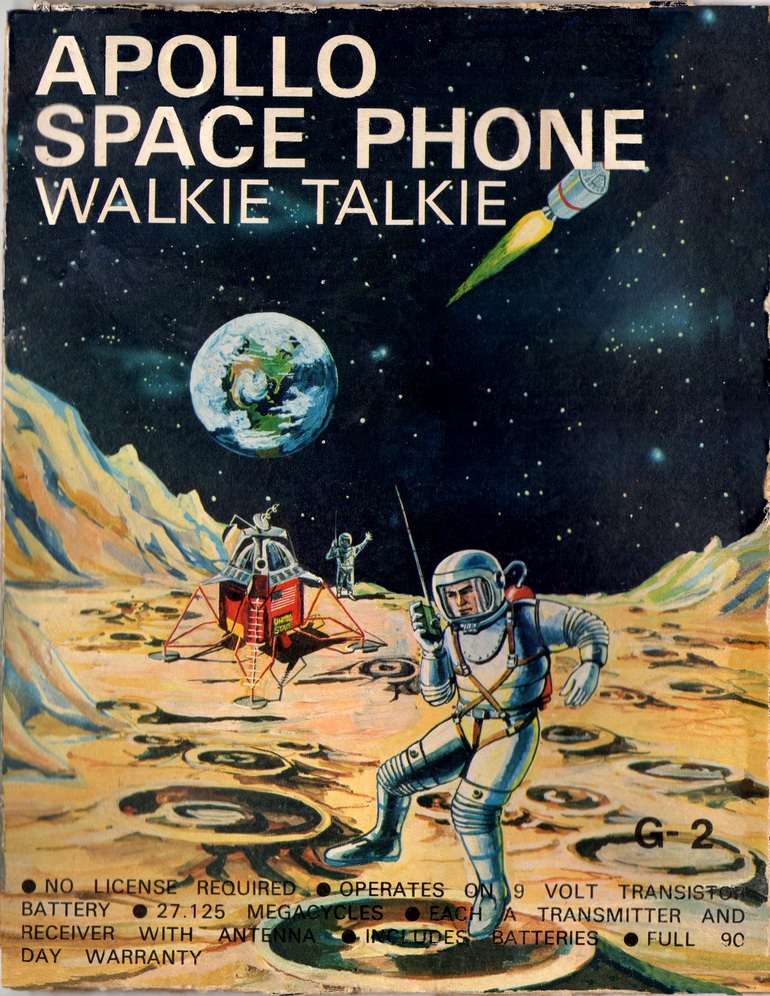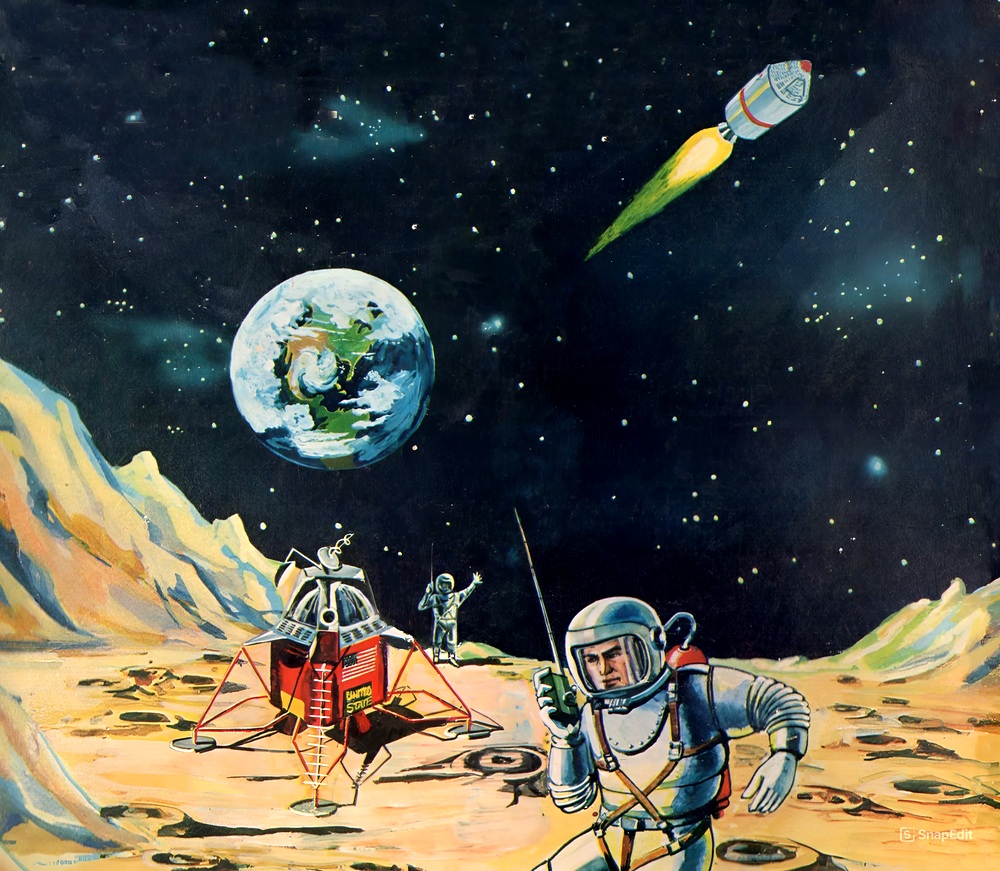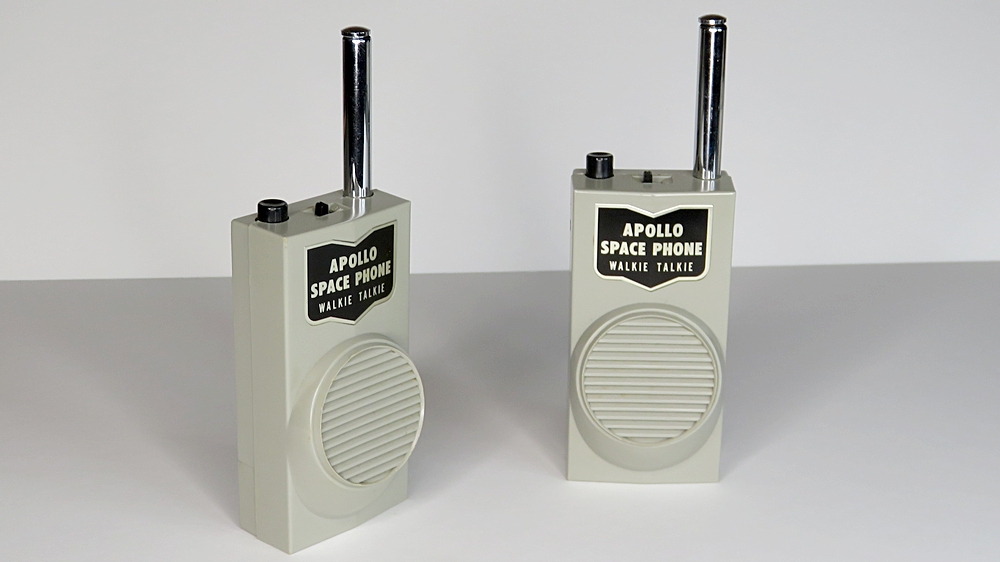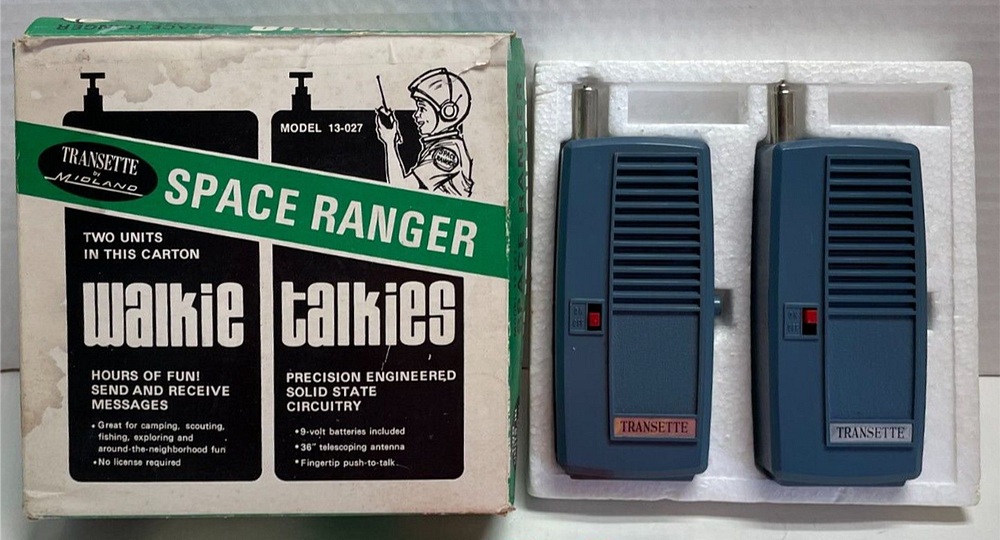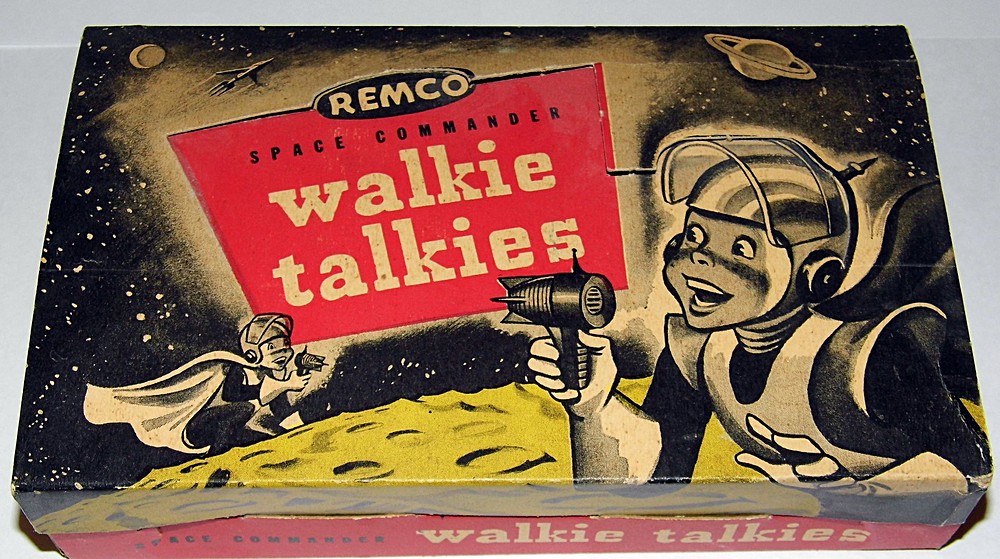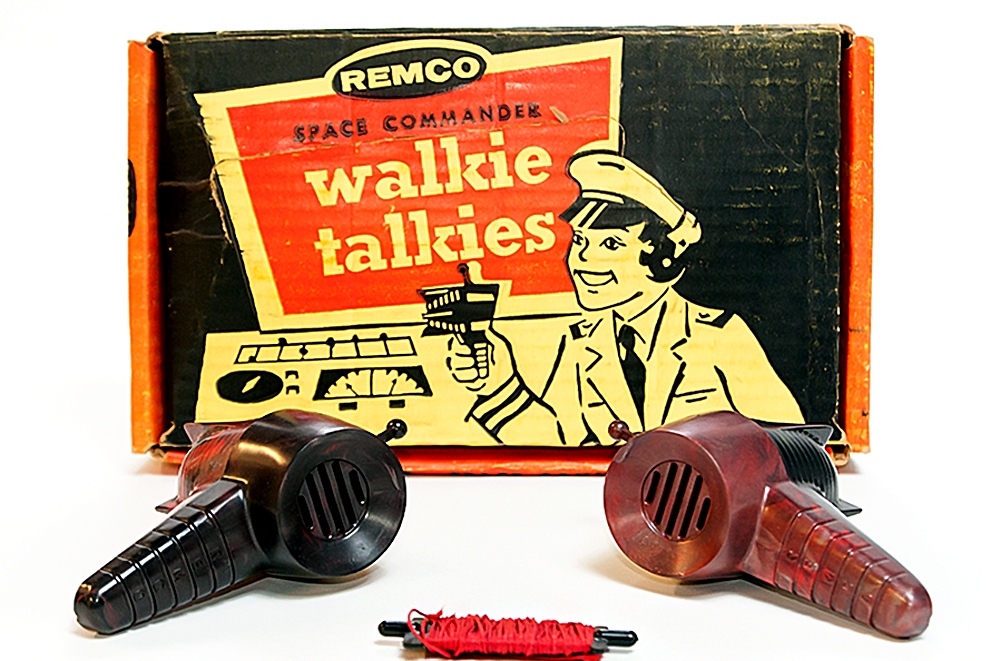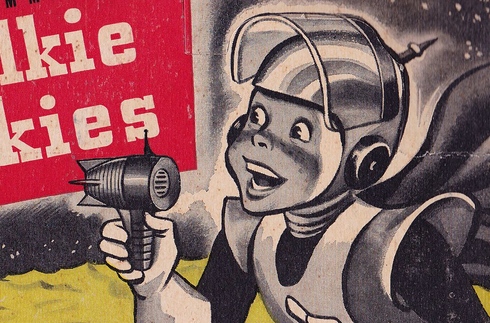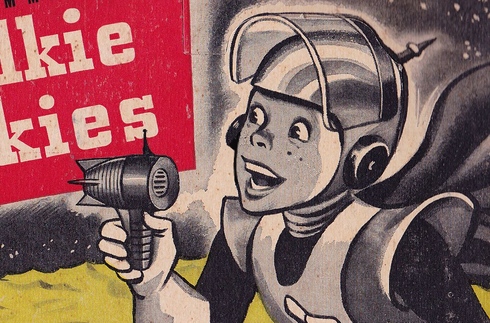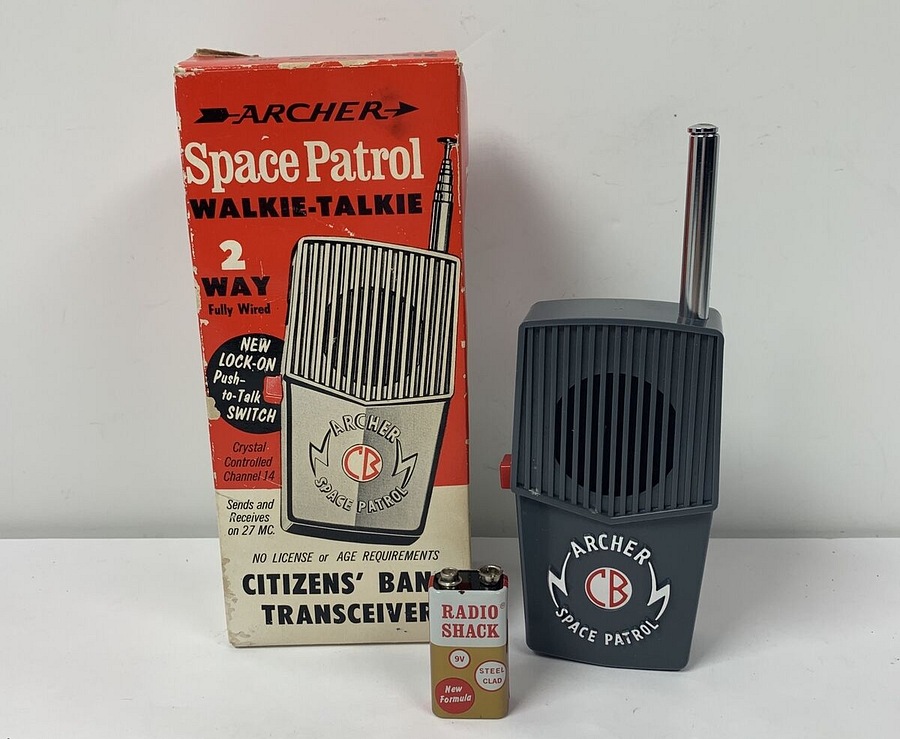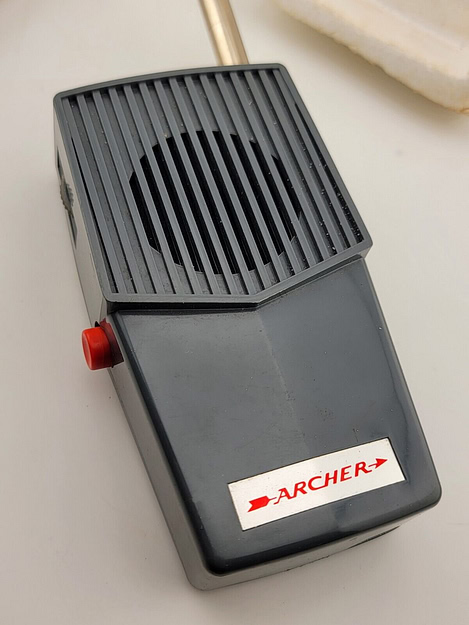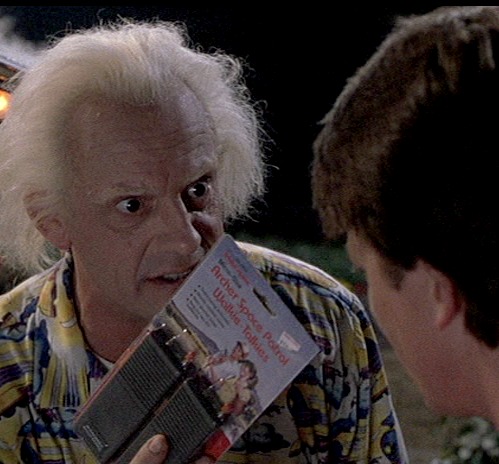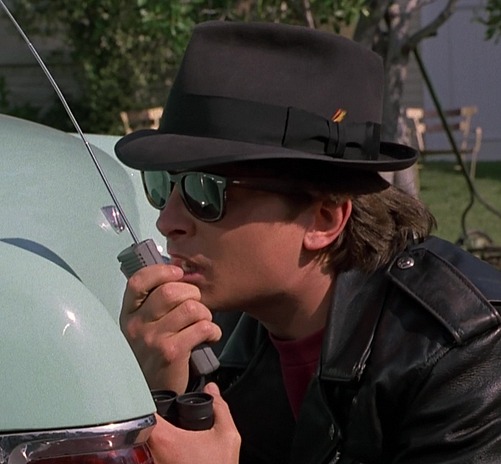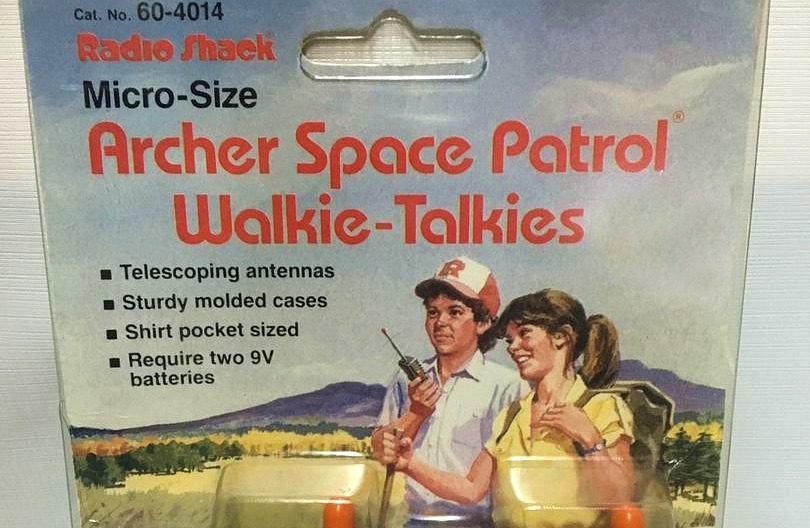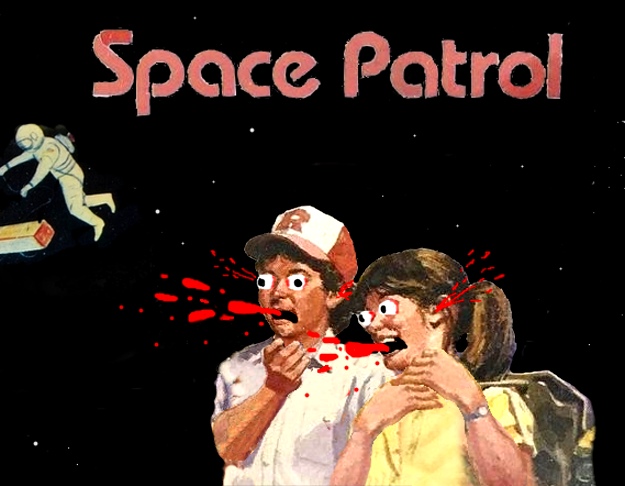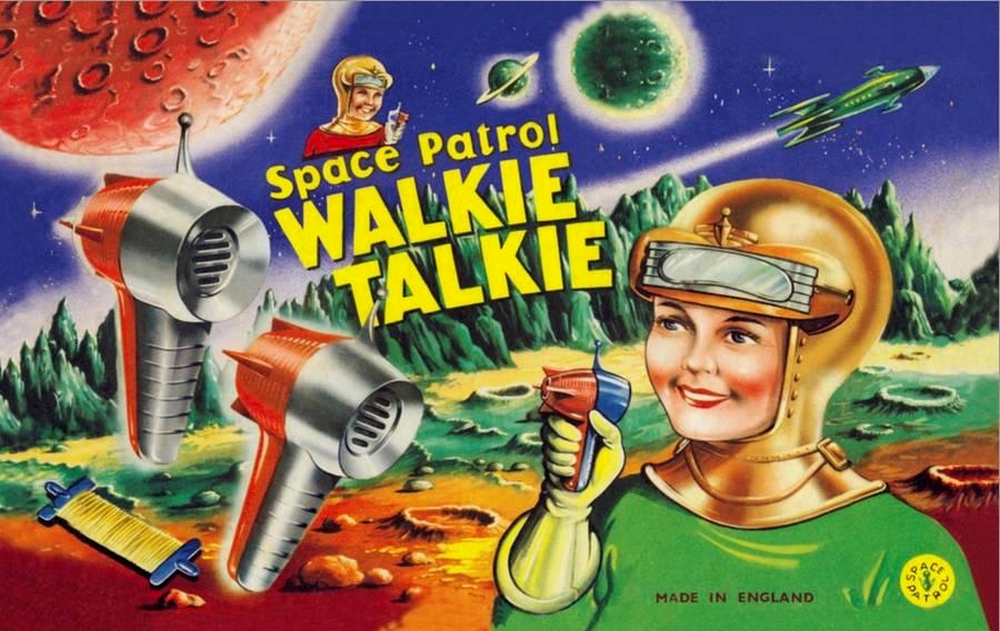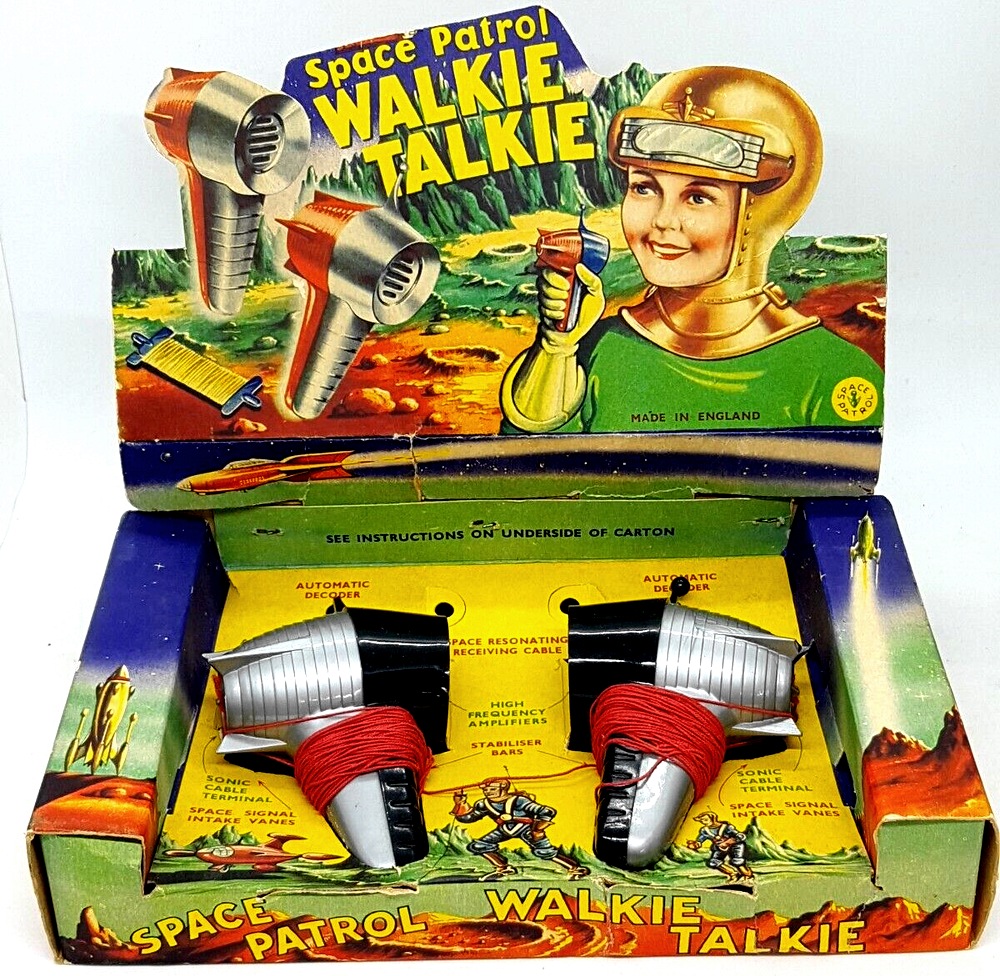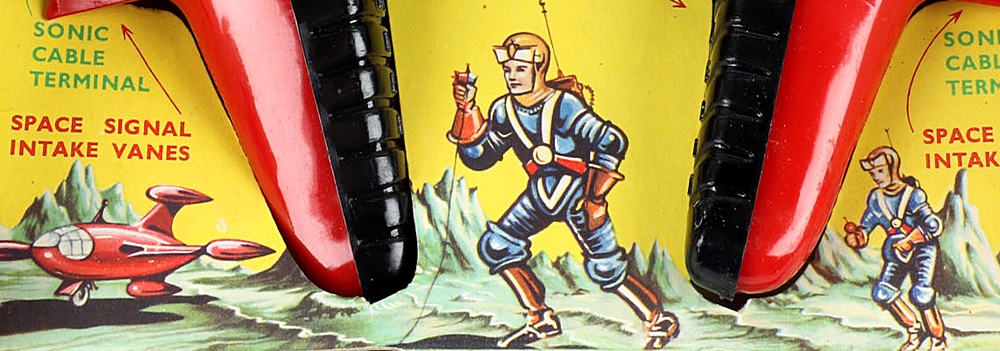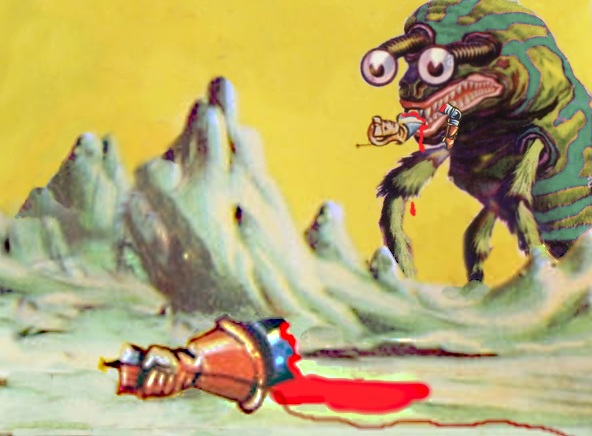 |
The "Astro
Commander" walkie-talkie
(Also known as the "Space Commander") |
 |
|
|
|
|
|
|
|
|
|
|
In 1972 I attempted to
join the CB radio "community" with a six dollar
walkie-talkie. Three of my friends, Joe Jones, Jimmy Nolen
and Charlie Keenan had CB base stations, and through these
base stations they were connected to a network of (sometimes
crazy) people of like mind and talents. Joe, Jimmy and
Charlie all had the same type base station, the 5 watt
Lafayette Comstat 19.
Alas, the radio I armed myself with failed me miserably. I
did attend two "Pizza Bracks" with Charlie and met about ten
people with CB radios and walkie-talkies who were very
interesting. Most notable was a kid named "Hair" who seemed
to be the smartest guy there. His real name is Brian
Freedman, a.k.a WB3DPL. His nickname was "Hair" because he had
long hair.
I'm not sure what a "Pizza Brack" was. I went to somebody's
house with Charlie, probably Brian's, but I don't remember having any
pizza. I think we got there late both times and the pizza
was gone. "Pizza Brack" seems to be a made-up word, at any
rate. Perhaps "brack" was actually the word "klatch" and
Charlie misheard or mispronounced it. We'll never know.
Decades later I met Brian at a hamfest and asked him what a
"Pizza Brack" was, and he replied that he had never heard of
the word.
|
|
|
|
Here's Brian working at Radio Shack in Philadelphia on
December 4, 1977. He's selling CB radios! |
|
|
|
|
|
The walkie-talkie I bought, though completely useless at the
time, is a fond memory. There is it below, on the left. |
|
|
|
The Lafayette model HA70C "Astro
Commander" Walkie Talkie. This picture is from the Lafayette
Spring 1969 catalog. |
|
Notice that in the top picture it is called "Space Commander
but in this picture it's called "Astro Commander." |
|
| |
|
|
Here's my Lafayette Astro Commander
HA-70C sitting on top of my Lafayette KT-135 in 1972. |
|
|
Notice the alligator clip on the antenna. This was connected
to a wire that went up on the roof which was used as an
antenna for the KT-135. The theory behind the long wire antenna
on the Astro Commander was that I'd be able to talk to Charlie and Joe, who had CB base
stations. They each spent a bundle of dough for their
Comstat 19, but
I, being of poorer means, would be able to emulate them for
only $5.99 plus tax. One tenth of the cost, even less if you
consider the roof-top antenna. The fools! You could tell I
was the brains behind this operation!
In place of
their Lafayette "Range Boost" 1/2 wave antenna, antenna
mast, coax cable and connectors, guy wires, roof mount, turn
buckles and lightning arrestor, I used 50 cents worth of
wire. I was a genius! |
|
|
|
|
|
|
The Comstat 19 was sold from 1967 till 1970. It
was only $60, but as for me being able to afford one, it might as
well have been $60,000. |
|
|
In
reality, I didn't know anything about antennas, CB radios or
cheap walkie-talkies. The wire going to the roof probably
did more harm than good. It would have had to be, by sheer
coincidence, exactly 18 feet or exactly 36 feet long to be
the correct length.
I couldn't hear Joe but I was able to hear Charlie. Charlie,
however, couldn't hear me. I needed more power. The way I
got more power was to attach 10 nine volt batteries
connected in parallel to the back of the walkie-talkie and
wrap them up with electrical tape.
Charlie Keenan had made friends with the manager/salesman of the
local Radio Shack store in the Cheltenham Shopping Center.
His name was Steve. Radio Shack had "The Battery Of The
Month Club". You got a little card that got you a free
battery each month. You picked out a battery, your card got
punched, and off you went. Steve was really cool. He didn't mind me picking up ten
cards, picking out ten batteries, and then punching out the
ten cards. He actually encouraged me when I told him what I
needed them for, though he told me to never say "Lafayette"
in his presence.
With this huge boost in power I called Charlie on the
telephone and told him I was about to transmit to him on
channel 7. He still couldn't hear me. Not only couldn't I
talk to Charlie, I never spoke with ANYBODY over the darn
thing. The only way I knew it even worked was that I could
pick it up on the KT-135 while in the same room with it.
It was actually a very dumb idea to try to push ten times the
current through the walkie-talkie, but it wasn't my idea, it
was Charlie's. Thankfully, the circuitry prevented the
battery pack I made from causing the walkie-talkie to die in
a little puff of smoke. |
|
|
| |
|
|
|
Now, after 44 years, I've acquired
another Astro Commander. Four, in fact. A pair of HA-70Cs,
and a pair of HA-70ds. |
|
| |
|
|
|
|
| Now let's have a look at the box.
The first thing you notice is that the walkie-talkie is
called the "Space Commander," not "Astro Commander." The
Space Commander (or Astro Commander) was the only Lafayette
walkie-talkie that had this degree of artwork on the box.
Since the box never appeared in the catalogs it was probably
meant to appeal to kids who were with their parents in the
Lafayette store. |
|
|
|
|
|
|
|
The HA-70c and the HA-70d were both
called "Space Commander" on the box but "Astro
Commander" in the catalog. This may have been because a
company named REMCO had a set of walkie talkies named "Space
Commander". The actual walkie-talkie doesn't have a name on
it, so they could call it anything they wanted.
|
|
|
|
The neatest thing about the
box is that the scene wraps all the way around it. So when you turn
it in your hand you get THIS.
|
|
|
|
| Or THIS! |
|
In this scene a Gemini
Capsule has somehow made it all the way to the moon. There
are three astronauts, and the Gemini only held two, so we
can imagine a second capsule out of the picture. The
astronaut in the foreground is talking into his HA-70, but
not to the other two guys, so he must be talking to his
crewmate in the unseen capsule. He's probably pointing out
that the heat shield on a Gemini capsule wasn't designed for
a re-entry into Earth's atmosphere from the moon at
25,000 MPH,
but what the heck. Who cares? |
|
|
|
|
Updated artwork. This is actually a painting of
Ed White, but now he's at the moon holding an Astro Commander.
|
In 1961 there were
indeed plans to send a manned Gemini capsule into orbit
around the moon. This was to happen in 1965.
The Space Commander first appeared in the Lafayette catalog in
1967, so even though the box art may at first seem
ludicrous, it was based on an actual plan for Gemini 15. The
Gemini missions ended with Gemini 12, and it was Apollo 8
which went into orbit around the moon in December of 1968. |
|
|
|
|
|
|
An amazing phenomenon is also happening here.
The astronaut's voice is traveling out of his helmet, through the vacuum of space,
and into his Space Commander! |
| |
|
|
| Or perhaps he lifted his
visor to talk into the walkie-talkie and now he's dead and frozen in
that position. |
| |
|
| |
|
|
|
You could orbit the moon
with a Lafayette Space Commander, but to land on the
moon you needed a pair of "Apollo Space Phones."
Like the Space Commander, the
astronaut's voice could exit his helmet, travel through
the
vacuum of space, and enter the walkie-talkie. Why is there
an exhaust plume coming from the Command Module in this
picture?? |
|
| |
|
|
| The far astronaut waves
frantically as he screams, "He's leaving without us!!" They
brought low powered walkie-talkies that don't need a CB
license, but now they're out of range of the guy in the Command Module.
Stranded and left to die, they realize you don't need a CB
license while on the Moon, and besides, most people never
bothered to get one anyway. |
|
| |
|
| |
|
|
| Apollo Space Phones. Rugged
Walkie Talkies for use on the surface of Earth's moon. |
| |
|
| |
|
|
| In spite of the name and
the kid with the space helmet, you cannot go into space with
a set of "Space Ranger" walkie-talkies. The name and the
drawing are misleading, but it says right on the box that
these are for "around-the-neighborhood" fun. You had to be
very careful when selecting which walkie-talkie to purchase
if you wished to go into outer space. |
|
| |
|
| |
|
|
Shown here is a
"REMCO SPACE COMMANDER
walkie talkies" box from the 1950s. These are not radios, they are
connected to each other with a piece of red twine, though it
doesn't show this on the box. The twine was 15 feet long,
the range of the "walkie talkies." The EXACT range, since
the twine had to be taut. The advertisements stated they
operated on the "tight string principal" and the
included string was a "reel of communication line."
Unlike the Lafayette Space Commander, with these you don't
just go into orbit around the Earth's moon, you actually
land on a moon of SATURN! In the 1950s, the price for a set
of two was 69¢.
Today a set with the box costs $90.00 to $170.00, depending
on the condition. |
|
|
| |
|
|
| Here he is, the Space
Commander, himself! |
| |
|
|
| This kid looks like a monkey
so I turned him into a human, but I can't tell if it's a boy or
girl. |
| |
|
| |
|
|
Here is the Radio Shack
Space Patrol walkie-talkie that was available around
the same time Lafayette sold the Space Commander. They
operate on channel 14
with an input power of 65 milliwatts. You can lock on the push-to-talk switch, which doesn't sound very smart
considering they ran on a 9 volt carbon battery.
Do you see
anything "spacey" about it? Can you orbit the
Earth's moon with one? NO!!
If
you can't go into space with one of these, how are you
supposed to "patrol" space? What bullsh*t! What
liars!
Nice try Radio Shack, you serpents of deceit! How many kids did
you dishearten with the false promise of patrolling space
with your stupid walkie-talkie?
How many weeping kids put their Archer Space Patrol under
their dad's car tire right before he left for work, then
listened to the crunching as he pulled away?
They made several other versions of the "Space Patrol"
including a "Senior" model and a "Micro" model. One even had
a built in AM radio receiver. |
|
|
|
|
| Here's one that they didn't
call a "Space Patrol." Finally, some honesty! |
|
| |
|
|
| The Archer Space Patrol
"Micro" Model 60-4014 became popular after it was used in Back To
The Future Part II, in 1989. They are now collector's
items.
The last year the Space Patrol was sold was 1988. Radio
Shack had their walkie-talkie in the movie, but stopped
selling them before the movie was released. Genius marketing
decision!! |
|
|
|
|
|
|
Artwork on the top of the model 60-4014 blister
pack. Do you see anyone in space? Are they not called
Space Patrol ? |
|
|
|
|
|
If they tried to patrol space without a
spacesuit, this would happen. |
|
|
| The Micro Space Patrol transmitted in the 49 MHz band
instead of the 27 MHz
band, so you couldn't even use one to talk to an older Space
Patrol, let alone a Space Commander. The RF input power was
70 milliwatts, which is worse than the Lafayette
Space Commander. |
|
|
| |
|
|
Compare the Radio Shack
fake "Space Patrol" walkie-talkies with these real
"Space Patrol" walkie-talkies, which can be used while ON A
MOON OF SATURN! Careful analysis has
determined that this is an actual photograph. The
location is obvious. Otherwise, how would they have
obtained the picture?
Since these seem to be duplicates of the
REMCO Space Commanders, I would guess the Space Patrolman is on
the phone to his Space Commander. |
|
|
|
|
|
| These were made by Merit
Toys and Games in England. In addition to space
signal intake vanes, they had high frequency amplifiers, stabiliser
bars, and ATOMIC BOOSTER RINGS. Lafayette walkie talkies had
no such features. |
|
|
|
|
|
| The communication line seems to be laying on the
ground. Since these operate on the "tight string principal,"
the astronaut is out of touch with whoever is (was) holding
the other unit. |
|
|
|
|
|
| Why is the line slack?
According to every sci-fi movie ever made, outer space and
other planets are full of monsters that eat people. I shudder to think of
the quivering and dismembered hand still holding the other
Space Patrol. |
|
| |
|
|
|
| |


